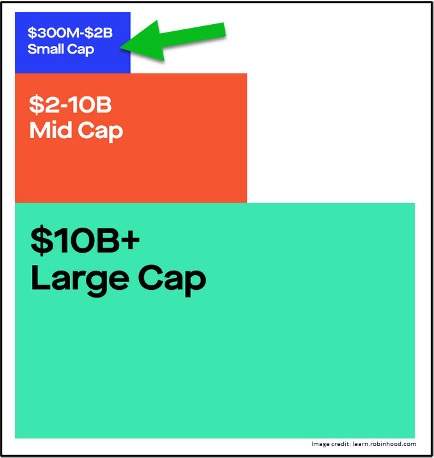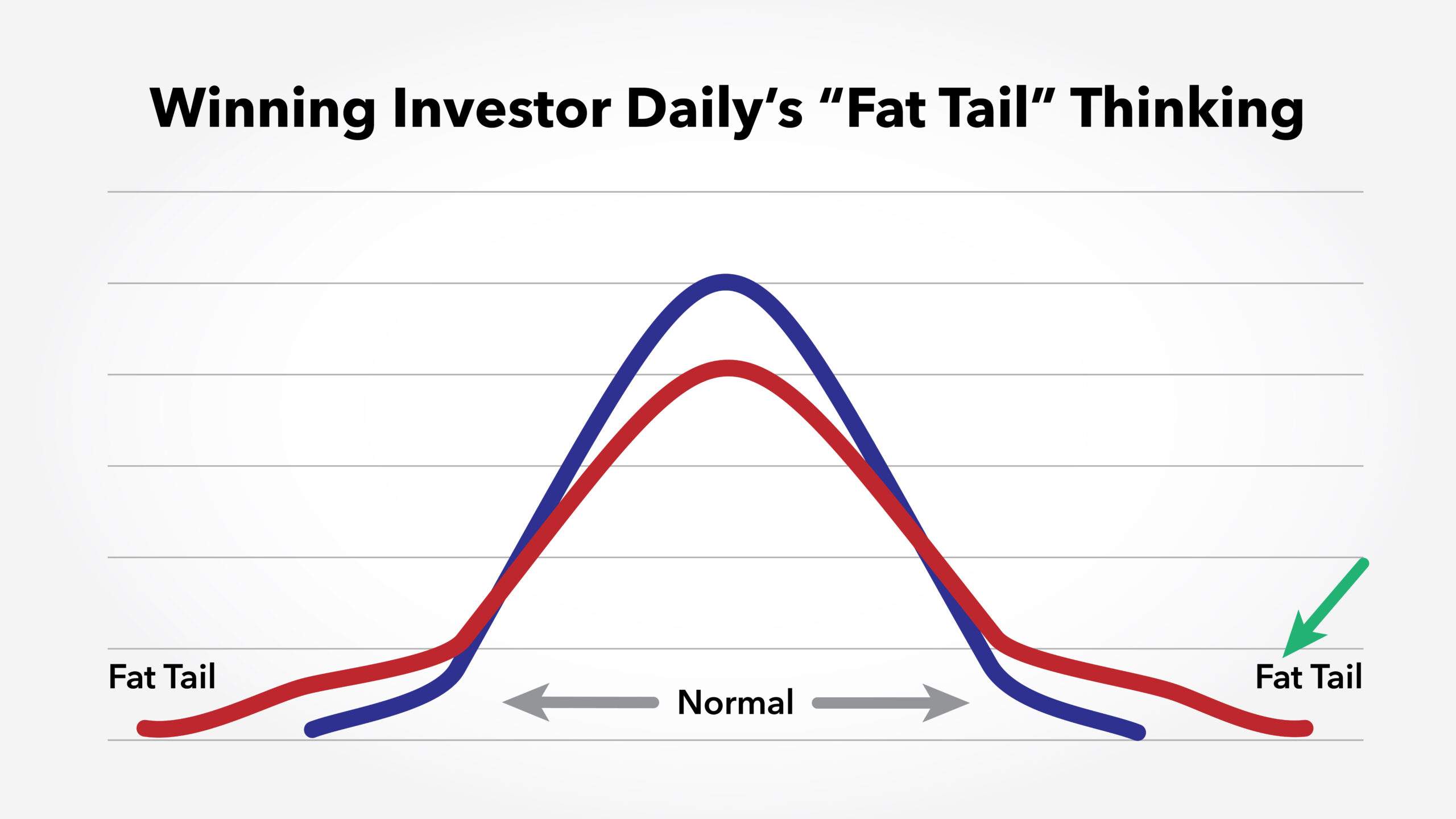Small, but mighty.
That’s what we call a group of stocks with the potential to soar +1000% in the right market conditions. In fact, they’re outperforming major indexes by nearly 2-to-1!
Their small size gives them the agility to move and grow in market conditions that easily topple giants.
I’m talking about small-capitalization (small-cap) stocks.
Even though they’ve been beaten down this past year, don’t rule out the future potential of small caps. Because, as with all things in the stock market, timing is everything. And as we navigate our way through and out of this bear market, it’s the perfect time for small-cap stock investing.
That’s why this week, I’m presenting a two-part series on the lucrative potential of small-cap stocks.
Here in Part 1, let’s explore the questions: What are small-cap stocks? And how can these small stocks be mighty stock plays?
Look out for Part 2 on Thursday, October 20. It will focus on the telltale signs a small-cap stock is ready to soar, and three ways you can take advantage of it.
Don’t want to miss out on Part 2? By signing up for Winning Investor Daily, you can get it sent straight to your inbox. Plus, you’ll get even more free articles and videos about investing tips, technology trends, market news and more!
But for now, let’s get acquainted with small-cap stocks.
What Are Small-Cap Stocks?
To appreciate small-cap stocks, first you need to know about “stock market capitalization,” or “market caps” for short.
There are three major types of stock market caps:
- Large-cap stocks: a market cap greater than $10 billion.
- Mid-cap stocks: a market cap between $2 billion and $10 billion.
- Small-cap stocks: a market cap between $300 million and $2 billion.
Just look at this chart below to see the difference.
But there are other types of market caps!
Honorable mentions go to:
- Mega-cap stocks: a market cap greater than $200 billion.
- Microcap stocks: a market cap between $50 million and $300 million.
- Nanocap stocks: a market cap less than $50 million.
In basic terms, a stock’s market capitalization is a publicly traded company’s “worth.” You calculate a company’s market cap by multiplying its shares outstanding (or stock shares currently held by investors) by the current price per share.
So you can visualize this, let’s use Uber as an example.
Its publicly traded name is Uber Technologies, and its latest market cap is valued at $51.4 billion. Therefore, it’s labelled a large-cap stock — also known as a moderate “growth stock.”
To calculate Uber’s market cap, take the company’s current shares outstanding of 1.98 billion shares. Then multiply that by the current share price of $25.94, which equals a $51.36 billion market cap.
So now that you know what a “market cap” is, here’s what makes small caps different from other stocks.
They have a great potential of beating institutional investors through growth opportunities.
Though they can be more volatile and can be considered riskier investment plays, historically they outperform large-cap stocks in the right market conditions.
And by that, I mean in bear markets — like the one we’re in.
How Small-Cap Stocks Perform in Bear Markets
According to RBC Capital Markets, small caps have a history of “underperforming before a recession and then outperforming coming out of one. That was the case in 1990, 2001, 2008 and 2020 […] when small caps fell more than large caps heading into the recessions before outperforming on the way out.”
The Russell 2000 stock index is made up of the smallest 2000 companies. Over a 20-year period, it’s actually doubled the total return of the S&P 500. And the S&P is widely regarded as the best single gauge of large-cap U.S. equities.
From 2000 to 2020, the Russell 2000 racked up a total return of 423.7%, while the S&P 500 only achieved 287.2%.
Although I’ll admit that in the current market, total returns for small caps are not as bright. Over the past year, the Russell 2000 is down 22% vs. a loss of 16% in the S&P 500.
But in our view, this is only temporary.
Small caps may be down, but they’re definitely not out.
When to Invest in Small-Cap Stocks
Small caps are ideal to invest in at the tail ends of bear markets because they’ll have even more room to grow once the new bull market begins. In a way, small-cap stocks are the real growth stocks.
They’re more innovative and have actual growth potential vs. the financially engineered growth of larger-cap companies.
In this inflationary market where the economy is being purposely slowed by Fed rate hikes, soon things will slow down even more. So investors looking for growth opportunities and better returns will soon turn to small-cap stocks.
But here’s the thing: Not all small caps are alike.
That’s where our team comes into play. We aim to find the best potential small-cap stocks.
These growth stocks are:
- Hand-selected by our team of analysts.
- Future-forward companies.
- In niche markets, with innovative products/services.
- Ripe for long-term investment.
These are companies that may not be on everyone’s radar. But they’re stocks that are not only poised for growth, but are also making waves in their respective markets. Here at Winning Investor Daily, this is what we call “Fat Tail” thinking.
Fat tails are what statisticians refer to as odd bulges on the extremities of bell-shaped curves. In more simple terms, fat tails are rare events that aren’t really discussed across major news.
A stock’s “fat tail” events are usually underpriced. This means great potential for gains — especially in small-cap stocks.
Want to Learn Even More About Investing in Small Caps?
Even in this bear market, we’re about to see smaller companies start to move. They’ll get the benefit of stock liquidity that’s pushing out from large caps, and into companies that are innovating, pushing toward the next evolution of their industries.
We call this the “Next Gen Effect,” when 1.0 companies, stocks or industries evolve to 2.0.
So when this bear market eventually ends and the next bull market begins, we’re going to see a surge of money push into 2.0 growth stocks.
That’s why Ian King and I are hosting a special webinar called “Bear Market Fortunes” this Thursday, October 20. It’s going to shine a spotlight on the next huge opportunity in small-cap investing.
You’ll learn exactly how Ian turned $350,000 into over $6 million during the 2008 financial crisis!
Sign up today to watch this webinar for free! You’ll get a link sent directly to your email.
And remember to check out Part 2 of this series on small-cap investing this Thursday, October 20. Find out what market signs can predict a small-cap surge and three ways you can take advantage of one.
Finally, if you want to reach out to me or Ian, you can follow us on Twitter: @InvestWithIan and @ALancasterguru. We’re happy to answer your questions and chat with you there!
Until next time,

Director of Investment Research, Strategic Fortunes
















